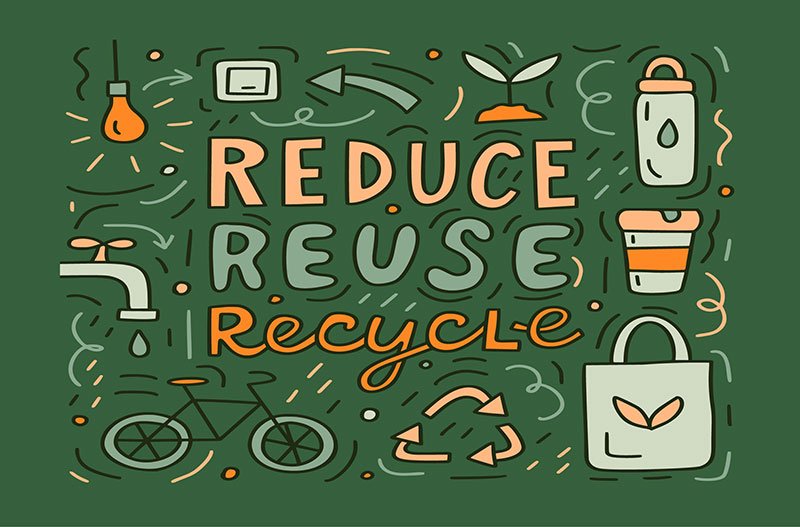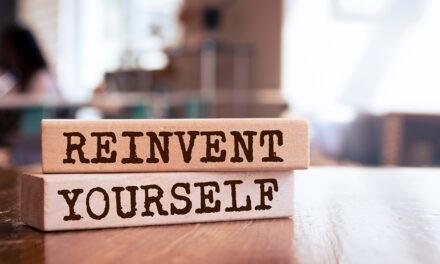How To Reduce Waste At Home
How to reduce waste should be a question we ask ourselves every day. However, our only consideration is getting rid of it the moment we produce it. The reality is our approach to waste is out of sight, out of mind. The faster it’s out of sight, the better, and good riddance. There is a reason for that, it’s called contemporary living.
The conveniences we are used to having
In our modern times, there are certain conveniences we are used to having and don’t think twice about. We expect the temperature in our homes to be comfortable. Depending on which part of the country, it should either be comfortably warm, or have a slight chill. We also expect that when we hit a switch, lights will come on. That there is water to wash our clothes and even more important to drink. We have amenities that are a part of our everyday lives. For many of us, there is no consideration of how these necessities are a part of our lives, or the convenience of having them.
Waste is all about convenience
This sense of disregard is how we are with the waste we generate. In the United States, we drink a bottle of water and we throw the bottle away. If environmentally conscious, it goes in a recycle bin. If not, it goes in the garbage. That’s just one item. What about that paper roll at the end of the toilet paper or paper towel we use? We finish a roll, and it goes in the garbage. Another example? The box from the spaghetti that was just put in boiling water? What happen to the box? Garbage? Or recycle? There are so many incidences that we don’t consider. We only know we make waste, we throw away waste.
Our mindless disregard about the waste we make
As a part of a modern world, we will never stop producing waste. However, we can learn how to reduce waste, and it starts at home. To understand why we should attempt to reduce our excesses, let’s mention a few staggering facts. In 2018, National Geographic noted in this post (link below) that the world generates at least 3.5 million tons of plastic and solid waste a day. Think of the above number in terms of waste a century ago. According to World Bank Researchers the waste we use today in comparison is ten times greater.
Related: How People Make Only a Jar Of Trash A Year
Then there is the United States. We are the epitome of modern and technological advancements. Our county should have a better handle on how we dispense with our excess garbage. In that same article by National Geographic, we are also called the king of trash. Why? Because we are the leader in the production of trash. As a country, we produce 250 million tons of trash per year. That’s roughly 4.4 pounds of trash per person, per day. Now think about each individual American in their home and the normalcy of cooking, cleaning, using the bathroom, having a super bowl party. It’s easy to see how we produce almost five pounds of trash per person, per day, isn’t it?
How do we even reduce waste the right way?
It starts with becoming environmentally conscious. We all know someone who doesn’t think twice about throwing that plastic or glass bottle in the trash, or use so much paper towels it’s absurd. Start with not being that person. It starts with educating ourselves on ways we can reduce our waste effectively, and doing what it takes to save our environment. Below are six simple ways to become environmentally conscious and start reducing waste at home the right way.
Six ways to reduce waste at home
1. Recycle
With as much being said these days about our planet and the need to conserve its resources, it’s amazing how many people still don’t do the minimum. The least we can do today is choose to recycle. We can attempt to separate our glass, plastic and paper and remove them from our home the right way. Recycling should be a part of every home, businesses, or any structure where garbage is a factor. Let’s use apartment buildings as an example. Depending on where you live, these buildings’ recycling practice is usually nonexistent.
Of the 20% of people who live in apartment buildings in the US, few of them have a recycle program. Nor do they follow the one adapted by the town where the buildings are located. Because they don’t, apartment dwellers ignore the need to recycle, or to start a system with the building owners or board.
These days, if you live in a house, recycling is much easier to do. As stated above, most towns have a recycle program to start. Contacting the town’s sanitation department and learning what their schedule and requirements are for recycling is an excellent first step. Also, most town offer a recycle bin for free as a part of residing in that town. Visit your town’s website to learn more, or to get a phone number to reach out and get started.
2. Reusable is the new trend
It’s trendy because more and more, you see celebrities walking down a street with a reusable water bottle. Haven’t seen the reusable coffee cups in anyone noteworthy yet, but that’s probably only a matter of time.
Why would we want to use reusable? Other than that, it takes a lot of energy to produce, ship and store the alternatives. It just makes sense if we are concerned about our planet.
Using reusable coffee mugs, portable water containers, will not only save money, but will have an enormous impact on our planet. A reusable water bottle replaces all the cases of plastic bottled water we buy at the supermarket. Also, just that choice alone reduces the carbon footprint of the person who chooses this alternative. Imagine putting less plastics in our landfills, and lowering the number of plastics that end up in our oceans and streams.
3. Multi-use should replace single use
We’ve already mentioned coffee cups and water containers. What about plastic knives and forks, paper plates, straws, paper towels? It makes sense to replace single use items. One perfect example is the straw. These days, it’s also trendy to have a metal straw on hand for our favorite beverage. Most stores sell them because of their ongoing popularity. A decision to choose multi-use over single use can have a big impact on our environment.
4. Avoid food packaging
There aren’t many grocery stores that don’t offer plastics for their produce and meats. While their goal is to offer convenience for their customers, the end-result is a negative impact for our environment. However, there is a plus. If we visit most supermarkets today, they expect us to come with our own bags to pack the groceries we purchase. Go one step further and avoid using the plastic bags they offer for convenience. The produce won’t bruise if they are not in their own individual plastic bags and our environment will thank us.
5. Buy repurpose
We all like brand new shiny things, whether for our home or personal use. Because of our love affair with “brand new” we cannot realize that sometimes you can get that same item used and in excellent condition. Pinpointing any item is irrelevant and not the point, because the things we need and buy are endless. But, before laying out the cash for something new, why not consider repurpose?
Let’s address the one thought that immediately comes to mind when we think of a thrift shop or a tag sale. Using something that was already used by someone else. A lot of us have issues with this. The idea of wearing a piece of clothes already worn by lord knows who, or believing that the coffee maker found at a tag sale may work, but not as good as a brand new one. There is a name for this tendency some of us have for looking down on repurposing. It’s called haughtiness. A nice way to say elitist.
If we can get beyond our affectation with repurposing. We can save items from ending up in landfills.
Related: Eco-Lifestyles Changes To Make For A Better Environment
6. Go paperless
There has never been a better time to go paperless and end our dependency on paper bills, magazines we read once and throw away, and junk mails. Also consider the endless other ways we depend on paper. This is the digital age, and almost every company we do business with invites us to go paperless. Why? Because it saves them a lot of money to not have to send a bill, or notification every month by snail mail.
For these companies, their reasoning is based on profit. For us ordinary people, the reasoning is two-fold. Yes, going digital save us time and sometimes money. Another reason is the reduction of our carbon emissions. Consider this: A single tree makes 17 reams of paper. That one tree would have prevented 110 pounds of CO2 from being released into the atmosphere. Every tree not cut down can absorb CO2 gases.
It’s a great idea to go paperless and organize our lives by ending the litany of paper bills, junk mail, and magazine that comes to us each day. It’s an even better benefit to know that being organized also helps to reduce our carbon footprint.
Related: Go Paperless In Six Easy Steps And Still Feel Secure
Summary
Reduce waste by following the three r’s of recycling. Reduce, Reuse, Recycle. It should be the system we execute every day in our personal lives. When we choose to practice the three Rs of recycling, we reduce greenhouse gas emissions and contribute to a cleaner planet. Choose a conscious approach to reducing waste. Be a part of the solution and not a part of the problem. It’s easy to see ourselves as an individual and think as an individual, one person cannot make a difference. Here is another way to consider it. If more of us made the effort, the individual now becomes a part of the many making strides towards saving our planet.













